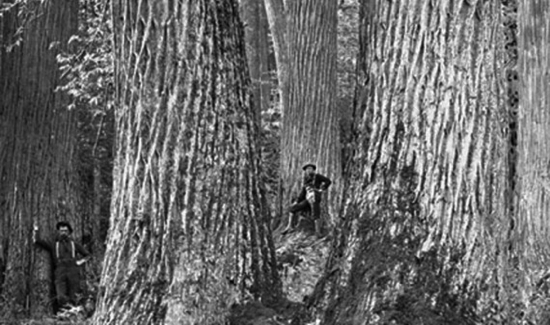American vs. Chinese Chestnuts

Reader Melanie wants to know the differences between Chinese chestnut trees and American ones, since Chinese chestnuts are some of the only trees available to plant. I’m certainly not an expert on trees, Melanie, but I’ll tell you what I know. Though the chestnut tree species that produce the largest nuts come from Eurasia, there were species of chestnuts in America before European settlers arrived here. Native Americans ate the fruit of these trees for millennia.
Sadly, American chestnut trees were almost entirely wiped out when a chestnut “blight” was accidentally introduced in 1904, most likely on some Japanese chestnut saplings imported to the East Coast. By 1940 chestnut blight had killed an estimated 4 billion chestnut trees in the States. The Appalachian Mountain forests, which were about 25% chestnut, were especially hard hit. The blight also killed off most of the imported European species which were nearly as susceptible to blight.
As of now there’s still no treatment for chestnut blight, but researchers have been trying to produce American-Japanese or American-Chinese chestnut hybrids that they hope to reintroduce to American forests in coming years. For now Chinese and Japanese chestnuts are the species that thrive the best in North America.
On the differences, Chinese chestnuts have smooth-rimmed leaves where American chestnut leaves are serrated. They also tend to spread at the trunk where American chestnuts grow straight (this characteristic made them superior lumber trees once upon a time). The fruit of Chinese chestnuts is also larger than American species. Hope that helps, Melanie!
Joe do you know the differences between the american chestnut (castanea denata), the chinese chestnut (castanea mollissima) and the european chestnut (castanea sativa)? I mean fruitwise and as far as the usage in the kitchen is concerned?
There’s also the horse-chestnut and the water-chestnut, which are a completely different plant-species according to Wikipedia. The latter is edible though.
On my travels to France I have learned to love “pain de chataigne” and I love to give this one a try, but I can’t get any chestnut-flour here in Vienna.
Love the roasted chestnuts, the candied and those chocolate-coated chestnuts in wintertime here…
Hello Thomas!
Always good to hear from you. I can’t say I know. I can tell you that Japanese are usually the largest, then Chinese, European and finally American which are the smallest of all of them. Within the various regions there are many different species, and hence lots of variation in taste and texture — from starchy and bland to sweet. Experts can probably peg some general differences in their flavors, but I’m not one of those. Sorry!
– Joe
Hi, Thomas, Hammermühle and Sonnentor are two companies who produce kastanienmehl – chestnut flour. In Austria and Germany is mainly found in shops that carry gluten free stuff – try DM Markt, Reformhauses or the companies’ e-shops, Hammermühle is slightly cheaper.
Sadly… anything foodstuff from China is off my list. Headed to Europe soon to replenish my chestnut flour supply.